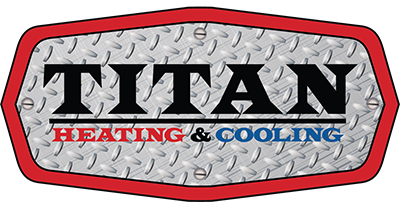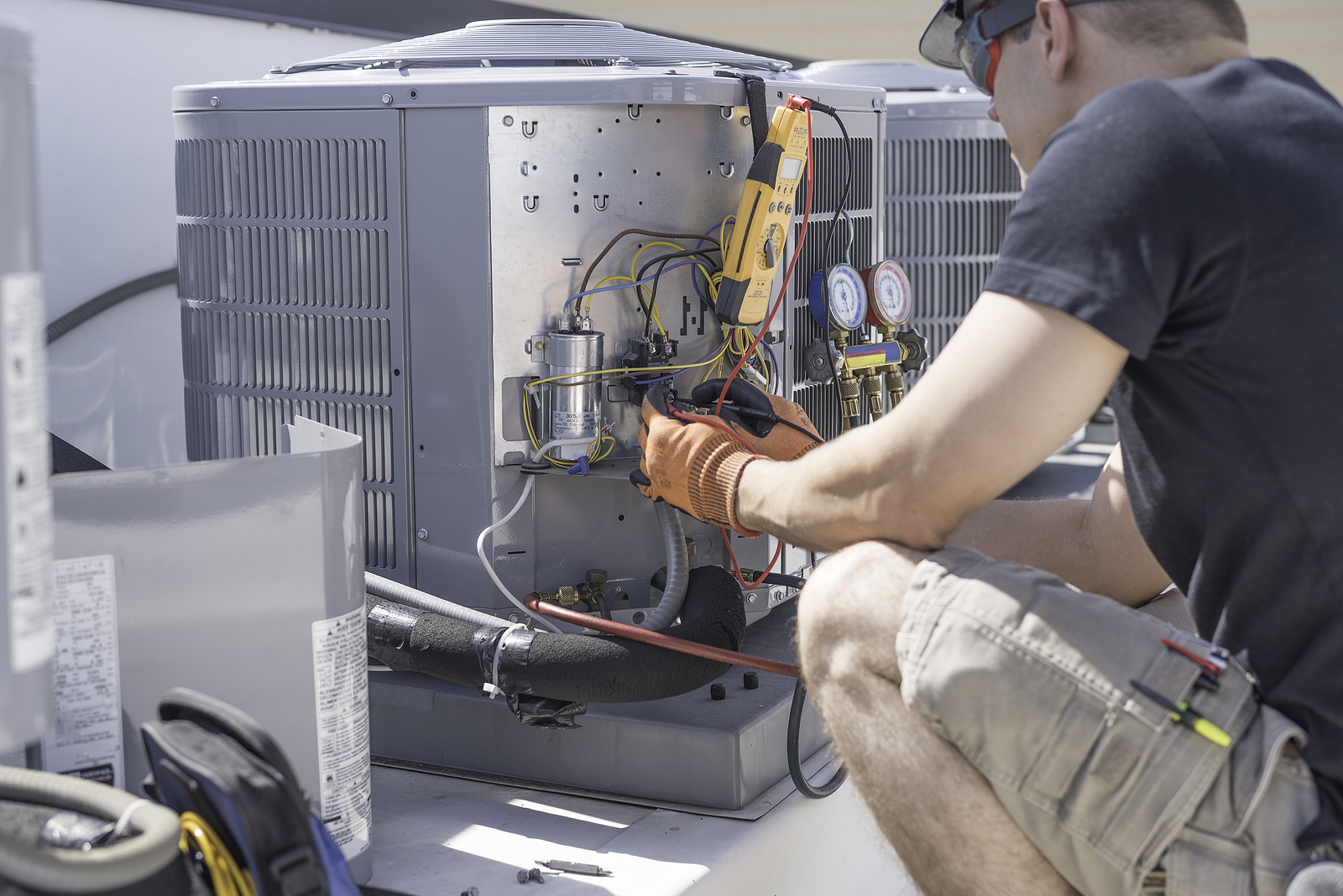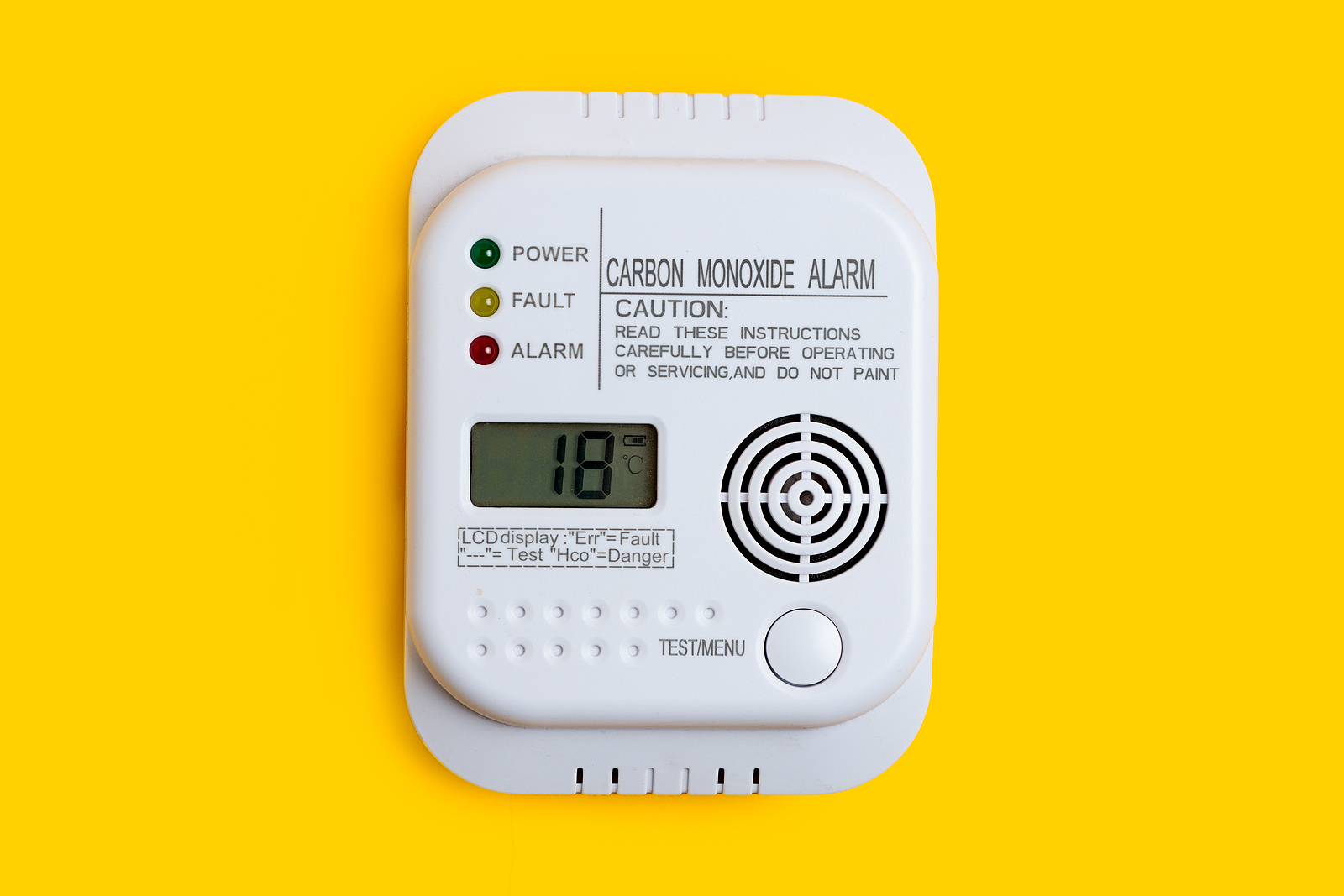Are you curious about what it takes to become an HVAC technician? Or do you have a student who is interested in a career in HVAC? If so, you’ve come to the right place. Working as an HVAC technician can offer you a fulfilling career taking care of the systems that keep people comfortable every day. Heating and air conditioning systems are a vital part of maintaining a comfortable and healthy environment for work, play, and everything in between in both residential and commercial settings. Read on to learn what an HVAC technician does, what the job outlook is, and how to get started on your HVAC career. What Does an HVAC Technician Do? HVAC technicians install, repair, and maintain heating and cooling equipment, which can include furnaces, air conditioners, ventilation equipment, climate control systems, refrigeration equipment, and more. Throughout the day-to-day of their jobs, technicians may be required to: Read blueprints and HVAC equipment specificationsAssemble and install HVAC units, thermostats, humidistats, and timers in residential and commercial buildings Connect HVAC systems to electrical, water, and fuel sourcesTest HVAC components and systems according to the manufacturer’s specificationsTest piping or tubing joints for leaksInspect, unclog, and clean ductsTroubleshoot common problems with heating and air conditioning equipmentMaintain HVAC units to keep them in good working orderClean and replace air filters and other malfunctioning partsSell service contracts for HVAC equipment maintenance or servicing HVAC technicians also work directly with customers, many of whom are experiencing stress because their heating or air conditioning systems aren’t working properly. Knowing how to treat customers with respect, patience, and honesty is a crucial part of a successful HVAC career. Job Outlook for HVAC Technicians The job outlook for the HVAC field is good. According to the U.S. Bureau of Labor Statistics, the industry is expected to see 5% growth from 2020 to 2030, with an average of about 38,500 job openings each year. This number includes new jobs in the HVAC industry, as well as jobs that open up as workers retire or shift to different occupations. In addition, the U.S. is currently experiencing a significant labor shortage, and the HVAC industry is not immune to that. If you are considering a career in HVAC, there are plenty of opportunities available. Steps to a Career in HVAC While becoming an HVAC technician doesn’t require you to obtain a college degree, there are a few requirements you need to meet, as well as additional education and certifications that can help you be more successful in your HVAC career. Here are the steps to take if you are interested in becoming an HVAC technician: Get a High School Diploma or Equivalent. Most states require a high school diploma or GED to pursue a job in HVAC. If you are still in high school or working toward your GED degree, try to take courses that focus on relevant subjects, like computer science, physics, math, or shop classes.Take Classes for Your HVAC Certificate. While there is no federal requirement for HVAC certification, many states do require technicians to be certified. (Even if your state doesn’t require it, a certificate helps you appear more reputable to potential customers.) Classes for an HVAC certificate take less than a year and include training in diagnostics, testing equipment and tools, and principles of mechanics, electronics, and electricity.Complete an Apprenticeship. An apprenticeship is not a requirement for a job in HVAC, but it can help you gain on-the-job training and experience that will make you more attractive to potential employers. Apprenticeships can last anywhere from three to five years, and involve a combination of coursework and practical training.Work Toward Additional Licenses and Certifications. There are a number of certifications you...
Read MoreYour home’s indoor air plays an important role in the health of you and your family. Poor indoor air quality can contribute to health problems like asthma and allergies, and the effects of toxins like radon and carbon monoxide can be even more serious. Testing your indoor air quality is an important part of ensuring your home’s air is safe to breathe. Here’s what you need to know about indoor air pollutants, signs of poor air quality, how to maintain good indoor air quality, and how to test the air in your home. What Health Hazards Are Commonly Found in Indoor Air? Your home’s indoor air can be affected by pollutants coming from a number of sources — from the materials used in construction to carpet and furniture fabrics to mold and mildew due to poor ventilation. Some of the most common pollutants found in homes are: Mold and mildew: typically grow on surfaces due to ventilation issues or high indoor humidityRadon: an odorless, colorless gas and the second leading cause of lung cancer after smokingCarbon monoxide: another odorless, colorless gas that can be deadly if left uncheckedVolatile organic compounds (VOCs): emitted by building materials and household products; can exacerbate existing respiratory conditionsParticulate matter, including dust mites and other allergens: can cause shortness of breath, chest congestion, or wheezing, and are linked to increased risk of heart-related health issues When Should I Test My Air? Signs of Poor Indoor Air Quality For the most part, the Environmental Protection Agency (EPA) doesn’t recommend general indoor air quality testing, and there is no single test that can measure every aspect of the air quality in your home. However, there are specific tests for some pollutants, so it can be helpful to know the signs and symptoms to watch for to determine what tests you will need. Some indoor air pollutants cause obvious symptoms: for instance, nausea, confusion, dizziness, and headaches are often signs of dangerous levels of carbon monoxide in the home. And mold and mildew are typically easy to spot. Other pollutants may require a bit more observation to narrow down. Notice, for instance, if you start coughing when you enter a certain room or have health symptoms that disappear when you’re at the office or on vacation. Symptoms of allergens or other particulate matter in your air can include: CoughingWheezingShortness of breathScratchy throatWatery eyes Radon, one of the most dangerous substances that can affect your indoor air, causes no immediate symptoms at all — but long-term exposure can lead to serious health problems. This is why radon testing is often performed when a home is sold. If you bought your home many years ago, or a radon test wasn’t done when you bought it, it may be a good idea to have one done now. How To Test Your Indoor Air Quality Evaluate any symptoms you are experiencing, along with input from your doctor. Once you have things narrowed down, you can have your home tested for the pollutants you suspect may be an issue. Radon test kits can be purchased online or in many home improvement stores, or you can hire a professional to do it for you. To test for other pollutants, you’ll need to hire someone. To find reputable indoor air quality specialists, look to an organization like the Indoor Air Quality Association for a list of members. Or ask a local real estate agent or home inspector for a recommendation — both should have connections to air quality specialists in your area who can help with both testing and mitigation of pollutants. Ways To Improve Indoor Air Quality Beyond testing your indoor air quality, there are a few things you can do...
Read More



